Are There Any Dangerous Animals In Australia
"Aaaawww… cuddly koalas, wombats, quokkas and kangaroos…" If that's what comes to mind when y'all're planning your Australian chance, you may want to read this:
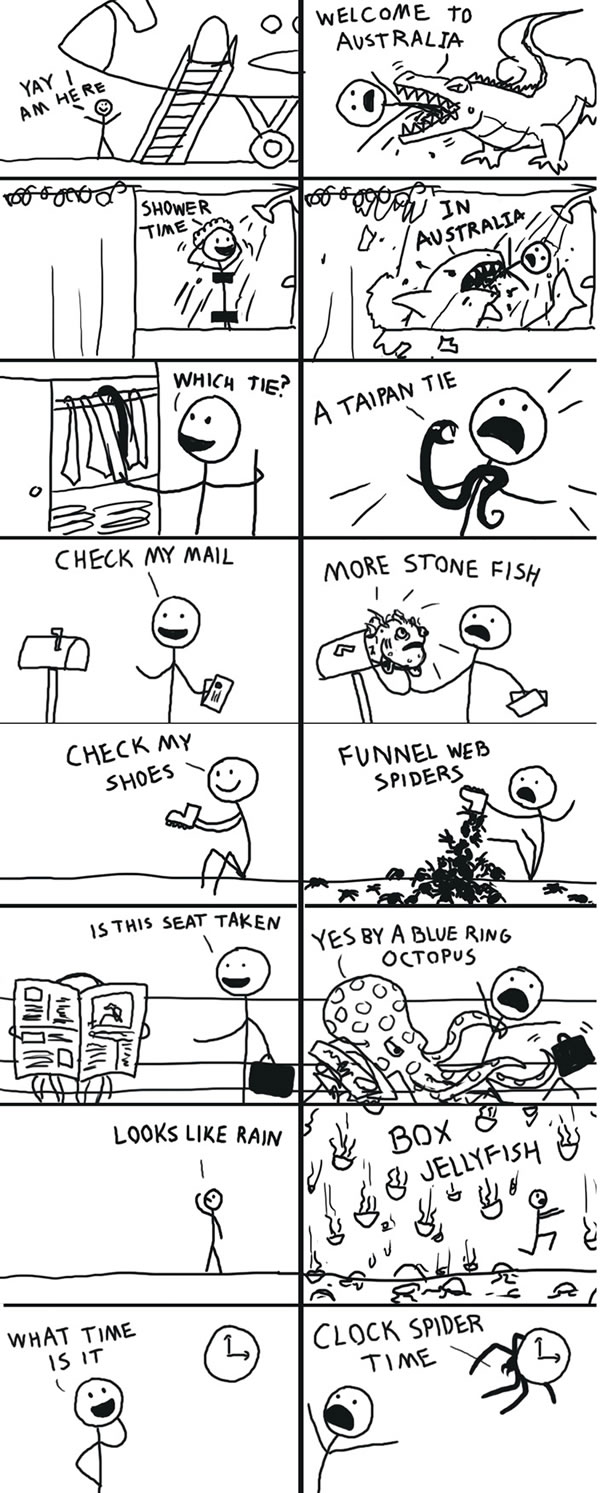
Yep, "just some other day in Australia." There'due south a reason why there are so many "everything wants to kill you in Australia" memes! Chances are, you lot won't stumble upon whatever unsafe animals during your stay simply you will probably hear about them.
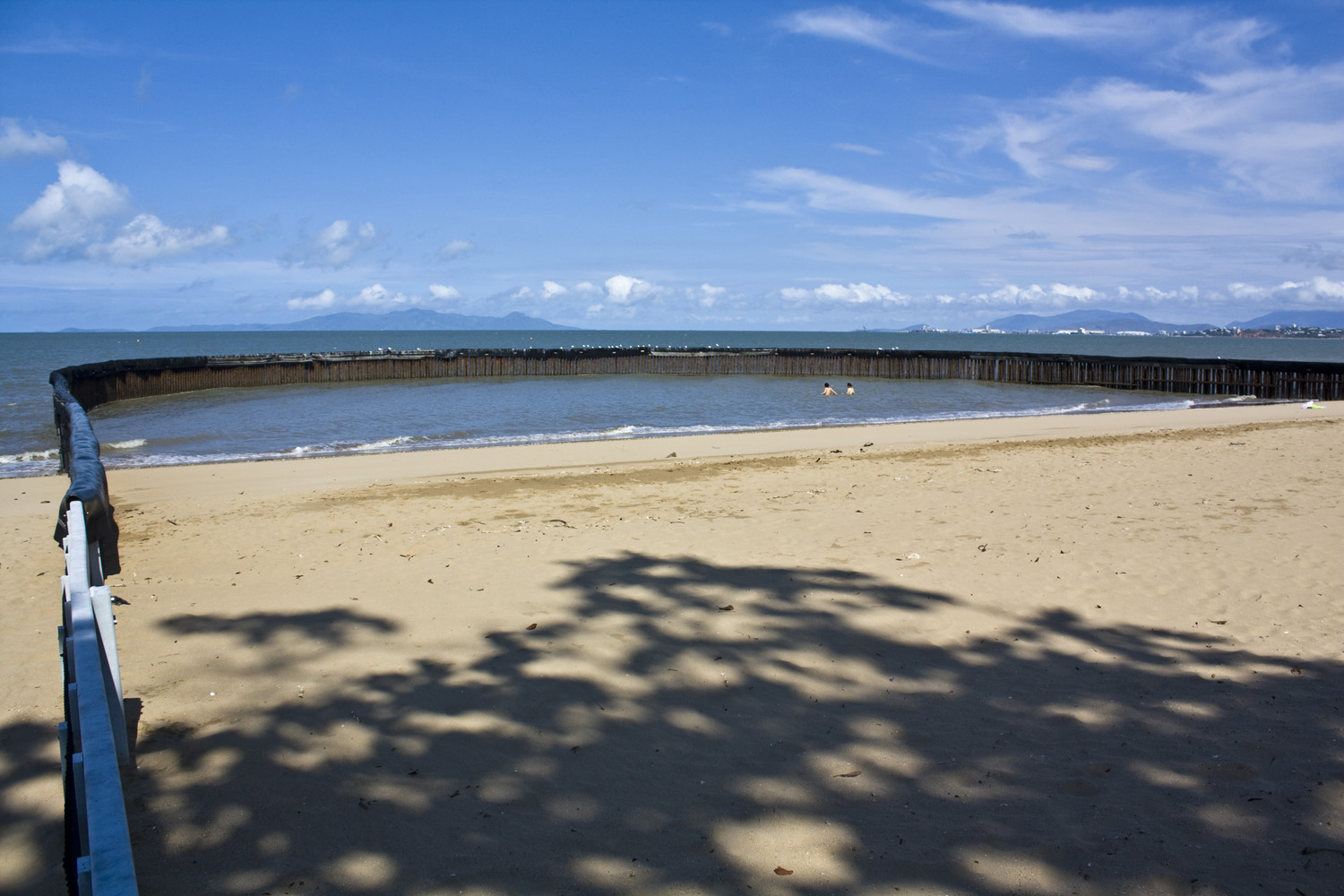
(Photo from the blog Happy-become-lucky moose: a beach with a stinger net)
These are the 10 most dangerous animals in Australia co-ordinate to HotelClub:
1. Box jellyfish (aka Boxfish, Sea Wasp, Fire Medusa or Stinger)
It doesn't often kill swimmers, yet the box jellyfish normally has a 10/10 danger rating. Information technology'south said to be the most toxic animal on earth with venom containing toxins that set on the heart, nervous system, and peel. You will observe it (… and avoid it!) in Northern Australia, especially between October and May.

The about lethal fauna known to mankind is transparent and pale blue, so it's very, very hard to spot information technology—inconvenient, isn't it? The sting is said to be unbelievably painful. It immobilizes nerves, affects breathing and motion and a large dose can cause cardiac arrest and expiry within minutes. In Queensland, first responders are trained to bargain with such emergencies and you will about always notice vinegar on the embankment to help in the meantime (patently, pee doesn't piece of work!).
2. Taipan ophidian
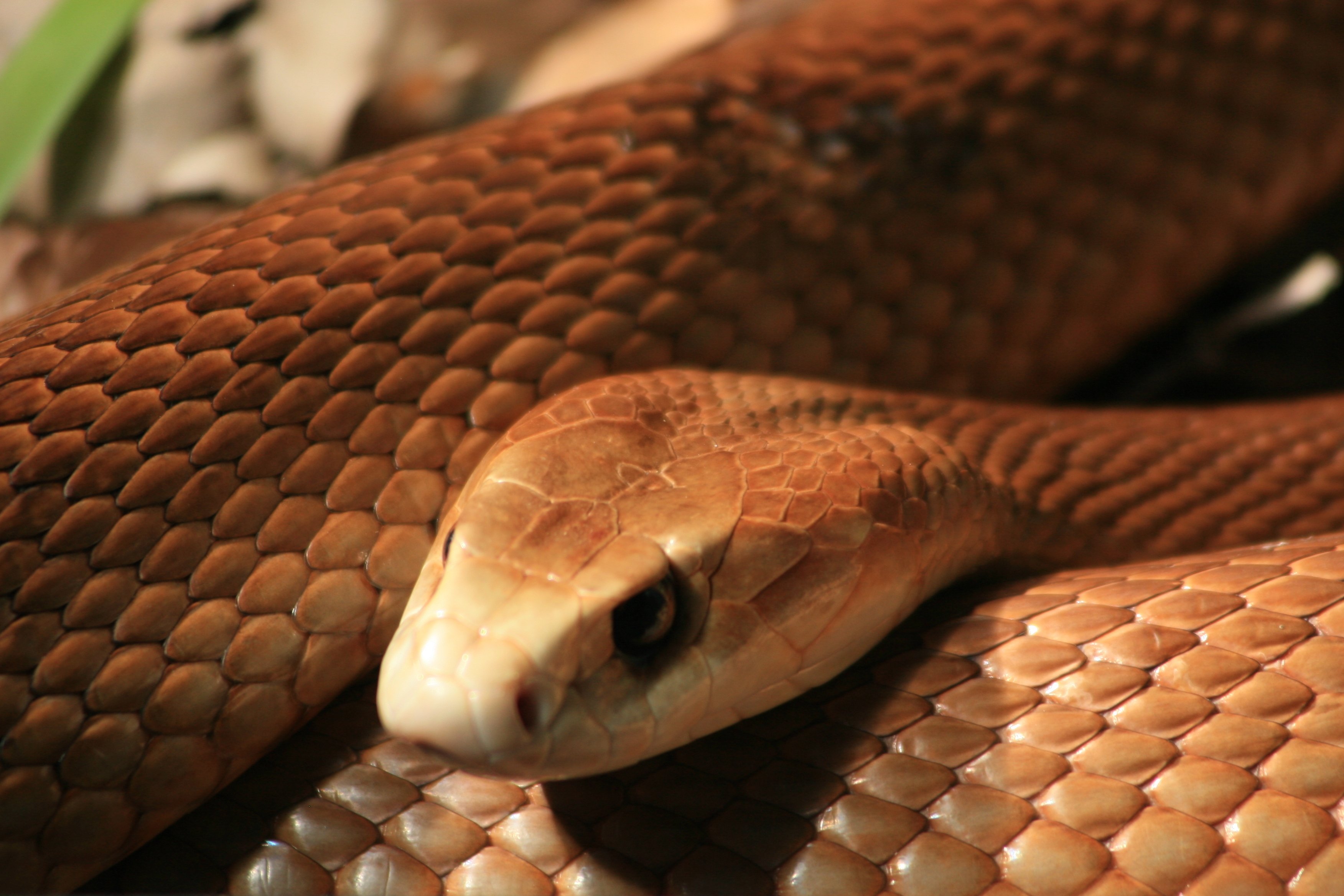
The most venomous snake in the world is owned to Commonwealth of australia and lives in the desert. On the bright side, it tends to slither away from humans rather than fight them—just a handful of people take been bitten by this species and aye, they survived. Still, even with good travel insurance, y'all probably don't want to test its highly toxic venom.
Are you heading to Australia with a Working Vacation Visa? Yous must buy health insurance coverage for the unabridged duration of your stay.
Earth WHV has been providing insurance solutions to Working Holiday Visa holders for all destinations since 2005.
Rates: €33 per month (departing from the European Wedlock) – €59 per month (departing from a non-European Marriage land).
iii. Saltwater crocodile (aka salties)
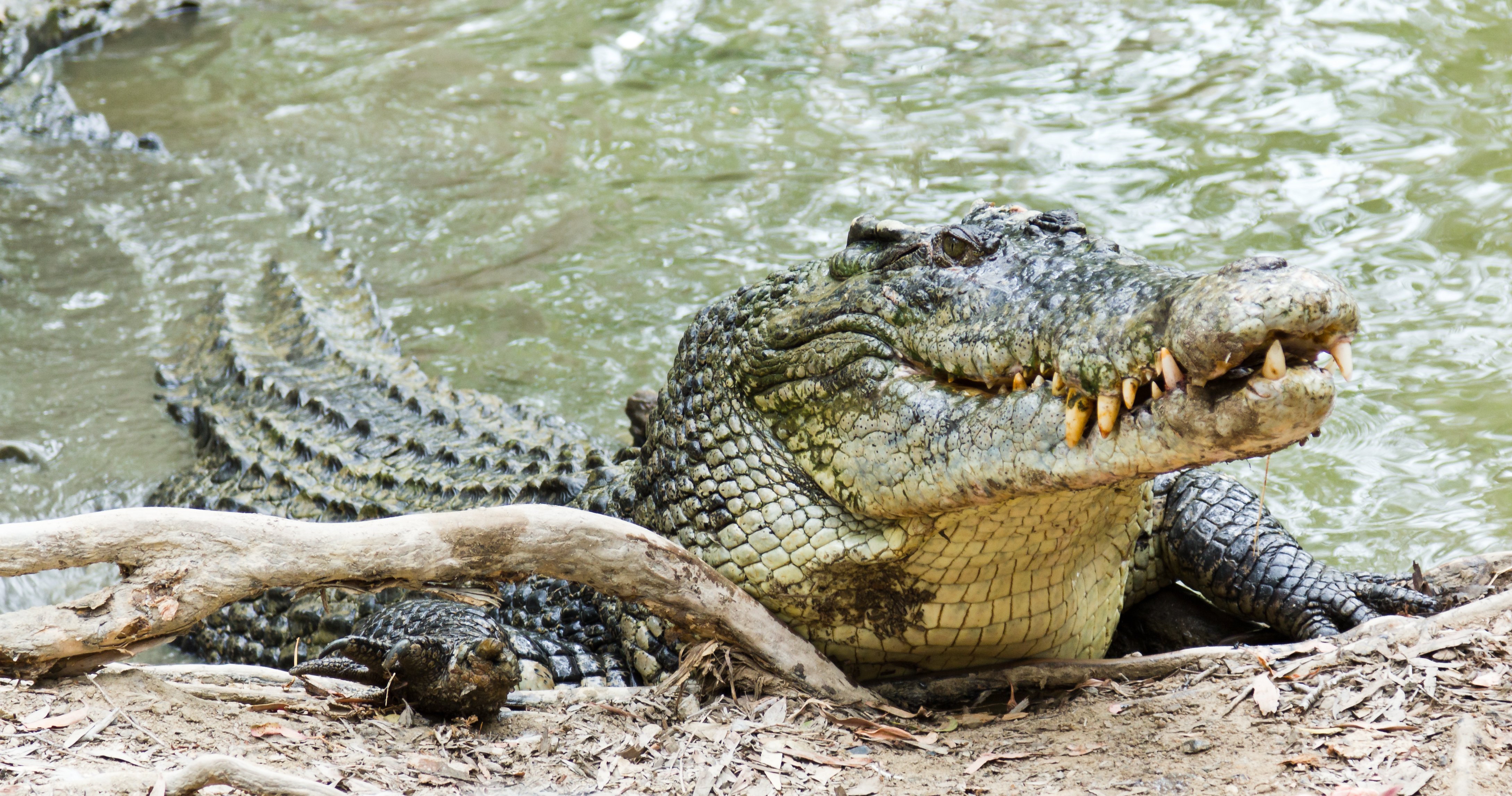
Saltwater crocodiles tin can be establish in the ocean, but they are more probable to exist in estuaries, and occasionally, freshwater. Historically widespread throughout Southeast Asia, information technology'south about exciting in the wild—but not in Australia and especially non around Darwin where yous should have these picturesque "crocodile warning" signs seriously.
Salties are huge, aggressive and opportunistic. They eat pocket-sized and big animals, including humans, although it's nevertheless fairly rare (24 deadly attacks between 1975 and 2009). Still, brand sure it's safe to swim and avoid swamps.
iv. Blue-ringed octopus
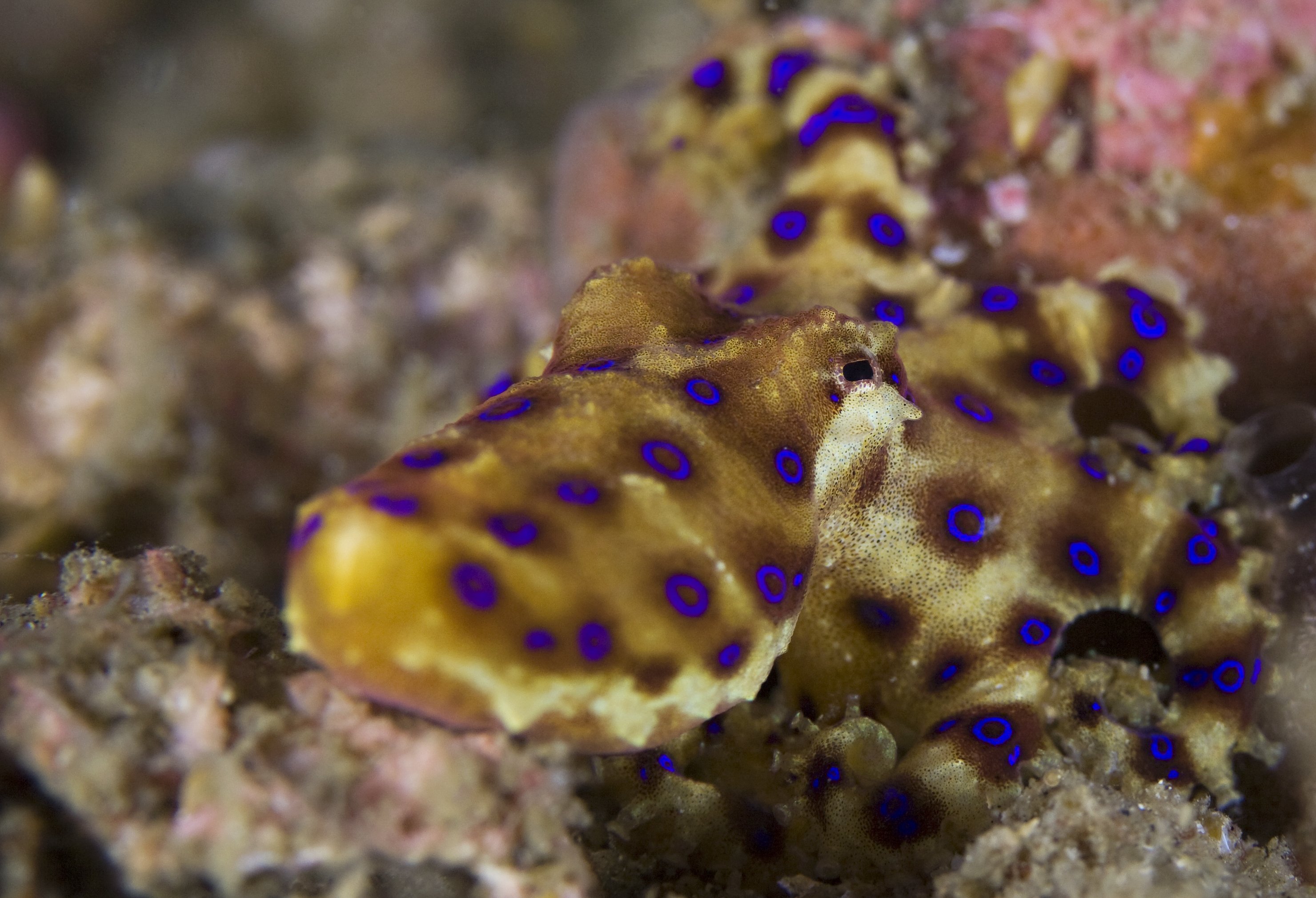
They wait absolutely amazing in a fish tank but don't touch—these ball-sized creatures seize with teeth and are highly venomous. The sting is ofttimes fatal, the torso shuts down, becomes increasingly paralyzed and breathing is no longer possible. In that location's no known anti-venom, although treating a seize with teeth is possible and includes helping the patient exhale until the toxin is removed from the trunk.
5. Stonefish
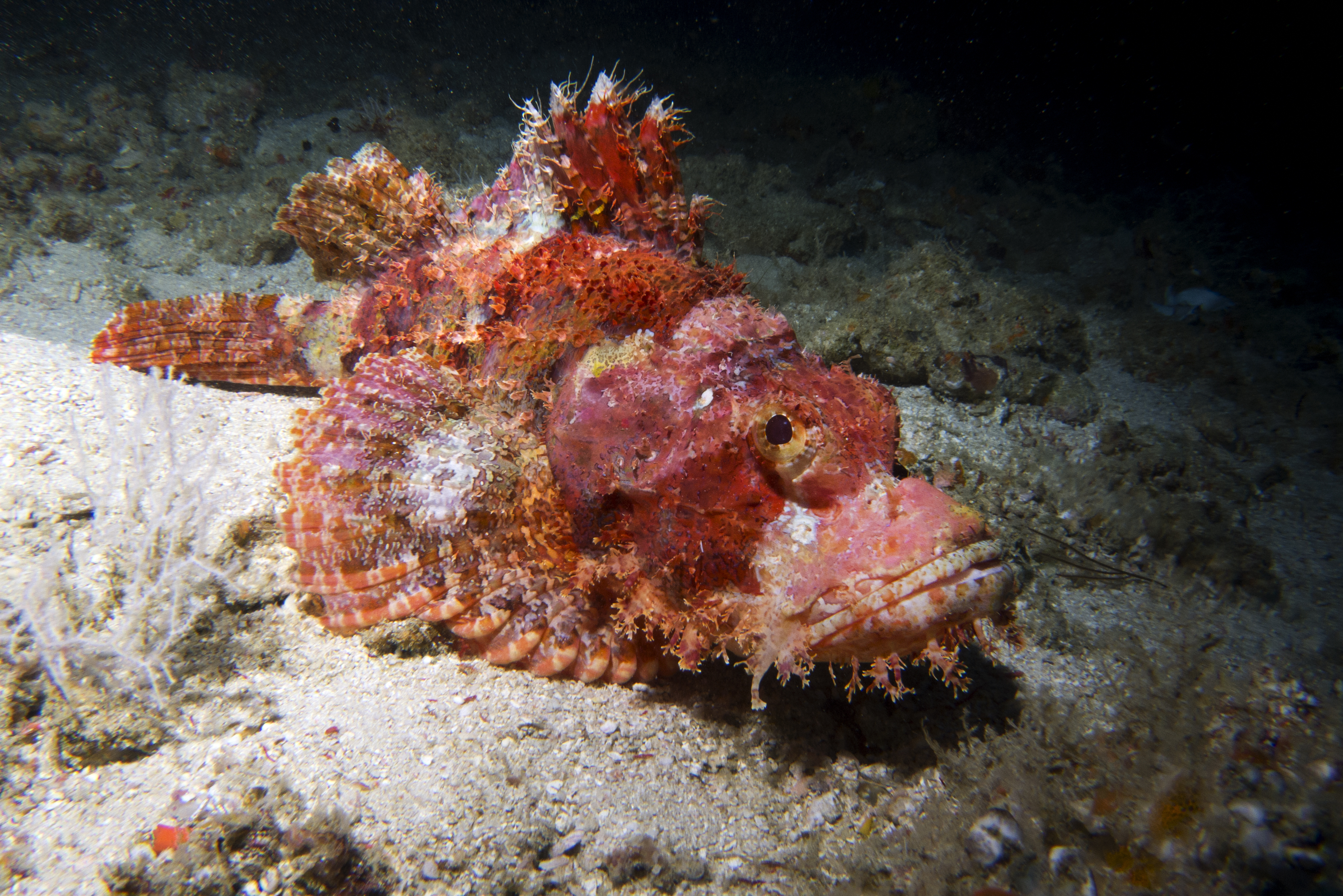
Dangerously venomous and even fatal to humans, the stonefish is very hard to spot because it usually lies motionless, camouflaged—very inconvenient, for certain. They are found throughout shallow coastal waters of the northern half of Australia. But don't footstep on them.
6. Redback spider (aka Australian black widow)
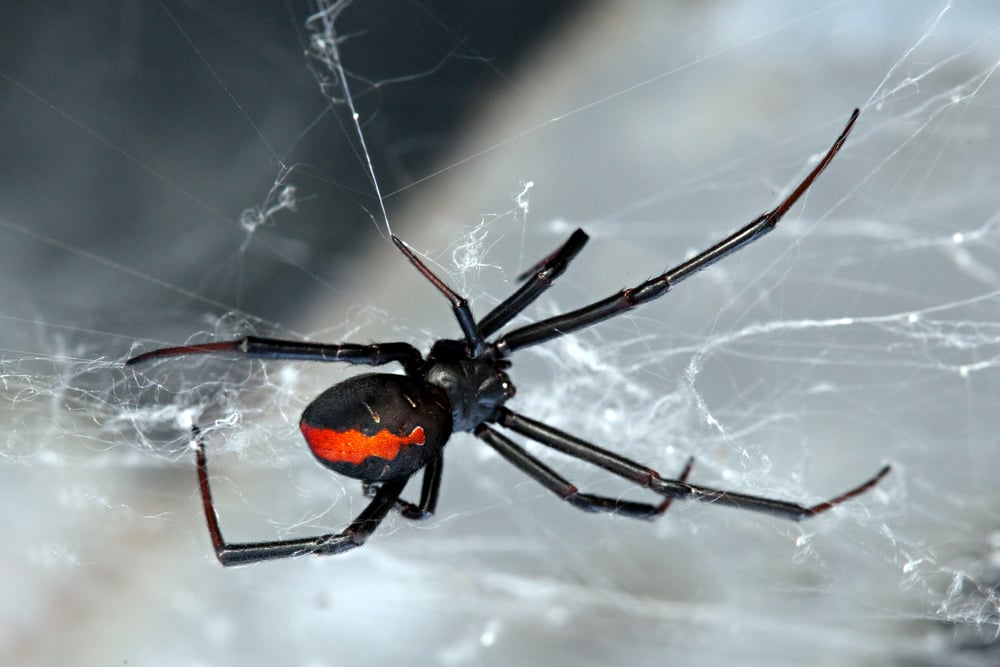
If you're usually scared of spiders, you can be extra scared of this 1. Information technology's small-scale (about 1 cm) but highly venomous and it tin exist found throughout the country. The bite can cause death but it usually doesn't because antivenom has been available since 1956.
7 and 8. Brown snake and tiger snake

Both species are highly venous and can be deadly, but antivenom does exist. Phew.
9. Great white shark
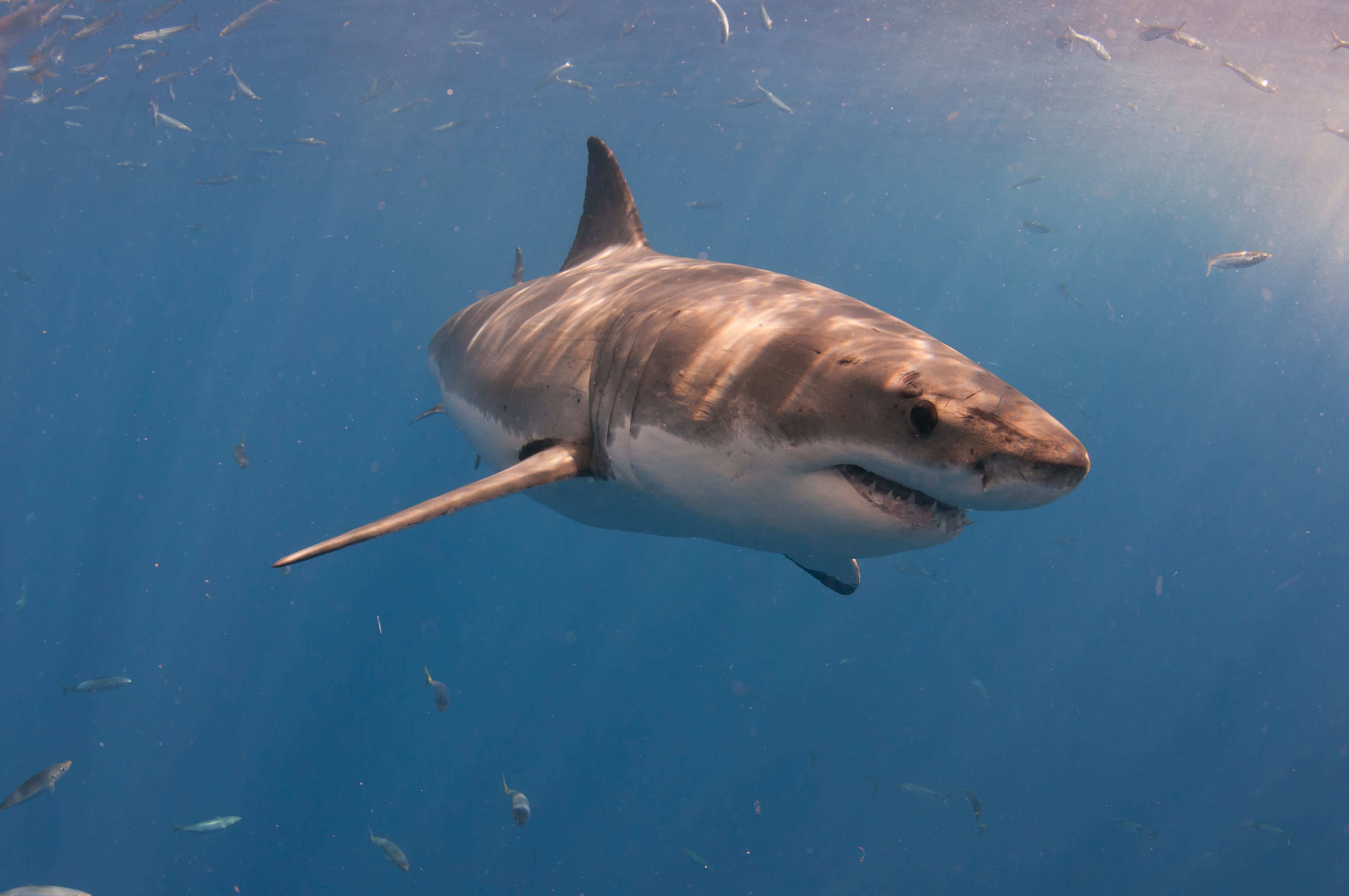
Australia's legendary beaches are a paradise for surfers… until you hear "SHAAAARK"!
The great white shark is a famous predator but its reputation every bit a human being-eater is pretty unfair—Hollywood helped built this crippling image. Myths die difficult, just the truth is that human-acquired shark mortality is continuing, primarily from accidental and illegal catches in commercial and recreational angling. Sharks as well tend to mistake surfers for turtles or sea lions.
Don't avert Australian beaches because of possible shark attacks. Deadly encounters are rare, nearly five yearly in the entire globe.
ten. Sydney funnel web spider
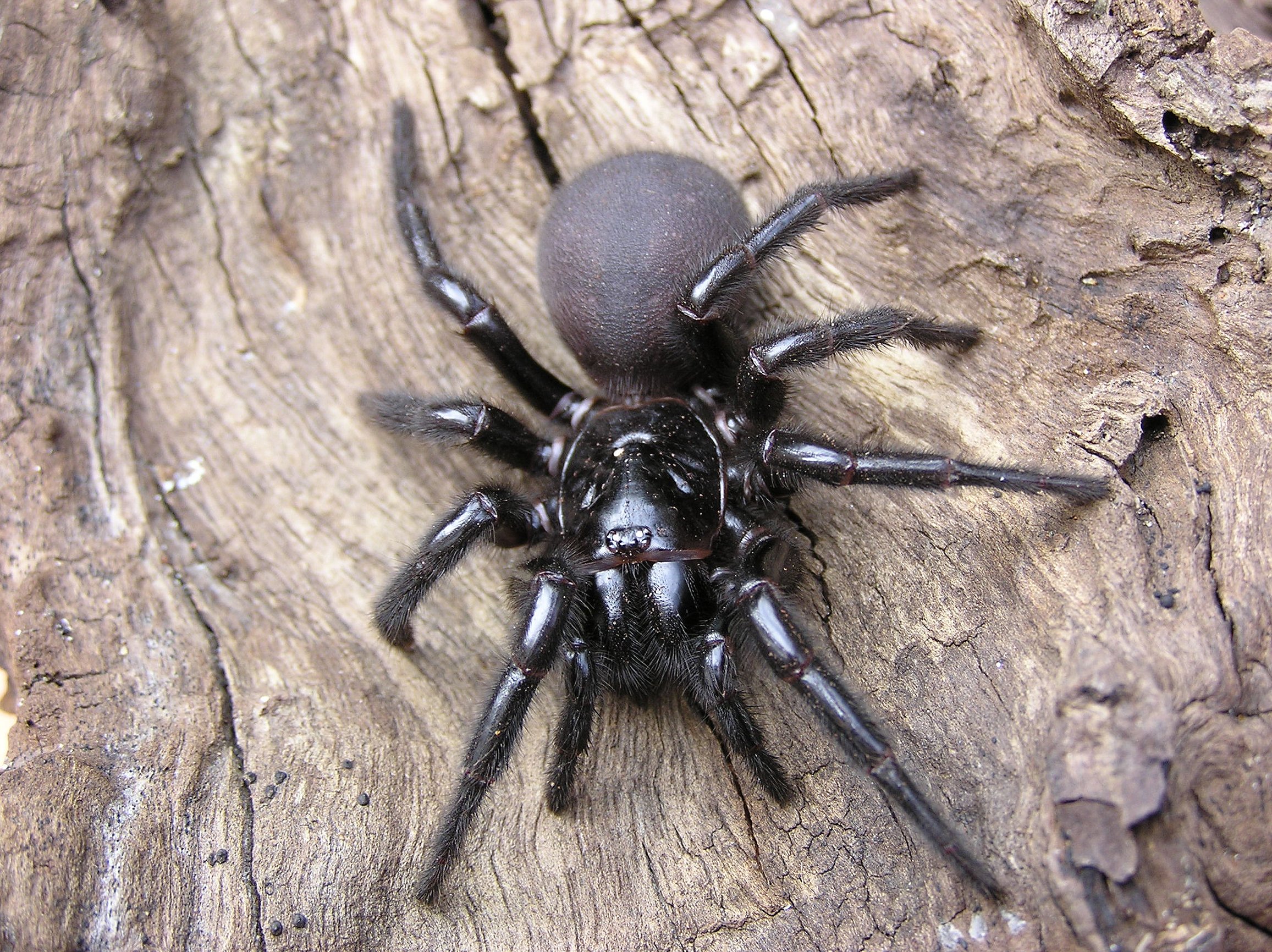
This modest spider (1–five cm) loves to hide in cool, humid places—including under rocks, logs or in your shoes. In New South Wales, they tin can take shelter in homes if the weather is peculiarly hot (yes, fifty-fifty if you never invited them). The spiders tin can survive immersion in water for several hours by trapping air bubbling adjacent to their skin, and so spiders found at the bottom of swimming pools may still be live. The bite is very painful and potentially mortiferous only antivenom exists.
Source: https://pvtistes.net/en/10-most-dangerous-animals-in-australia/
Posted by: maysracion.blogspot.com

0 Response to "Are There Any Dangerous Animals In Australia"
Post a Comment